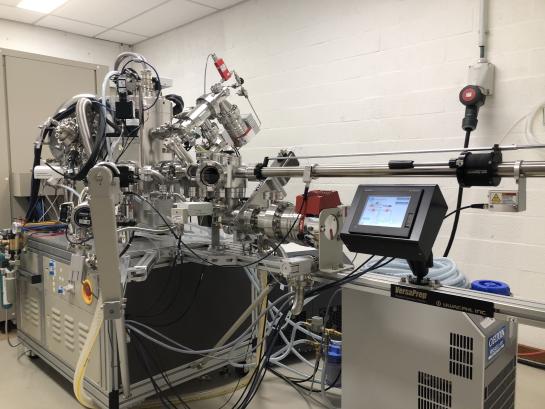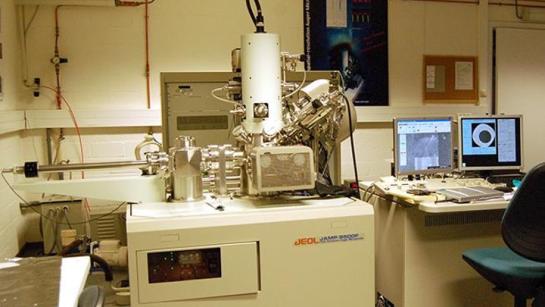X-ray Photelectron Spectroscopy (XPS)
Principle and characterization possibilities
XPS is a vacuum technique where a stream of mono-energetic X-rays is focused onto the sample surface resulting in a number of photoelectrons being emitted. The electron energy analyzer measures the binding energy of the photoelectrons. From the binding energy and intensity of a photoelectron peak, the elemental identity, chemical state and concentration of an element can be determined. In the outermost 10 nm of a surface, XPS can provide:
-
identification of all elements (except H and He) present at concentrations > 1 - 0.1 atomic %;
-
semi-quantitative determination of the elemental surface composition;
-
information about the molecular environment (oxidation state, bonding atoms, etc.);
-
non-destructive elemental depth profiles 10 nm into the sample (angle resolved XPS);
-
destructive elemental depth profiles several hundred nanometers into the sample using ion etching;
-
lateral variations in surface composition (spatial resolution of 8-100 μm, instrument related).
Available instruments and specifications
PHI5600CI
- Al Kα source
- Auger electron analyzer
- Minimum spot size = 100 μm diameter
- Monatomic argon sputtering
Versaprobe III
- Al Kα source
- Ultraviolet source
- Minimum spot size = 10 μm diameter
- Argon cluster sputtering
- Monatomic argon sputtering
- Heating/cooling possibility
- Transfer via glovebox under inert atmosphere possible

Field Emission Auger Electron Spectroscopy
Principle and characterization possibilities
Auger spectroscopy is a vacuum technique where a stream of primary electrons is focused onto the sample surface resulting in a number of different particles or waves being emitted (secondary electrons, back-scattered electrons, X-rays, photons, Auger electrons...). The kinetic energy of the escaping Auger electron is characteristic for the emitting atom. Consequently, measuring this energy allows the identification of the atoms present at the surface of the sample under study, while the number of detected Auger electrons of a certain energy is an indication for the concentration of the concerned element.
The Auger electrons are emitted from the first 5-75 Å of the sample surface which results in a very surface sensitive analysis technique.
Available instruments and specifications
JEOL JAMP-9500F
- Minimum spot size = 3 nm diameter (secondary electron imaging); 8 nm diameter(Auger analysis)
- Variable energy resolution between 0.05% to 0.6%
- Monoatomic argon sputtering
- Mapping and line profile possibilities
- Backscattered electron detector

